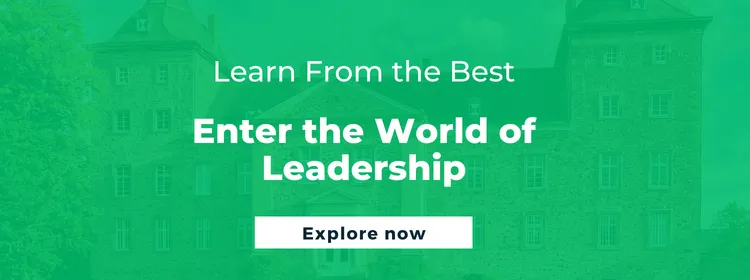How Does Adaptive Leadership Trigger Business Growth? A Beginner’s Guide

If you’re wondering what is adaptive leadership, you aren’t alone—especially when you’re building a sustainable business amid constant innovation and digitally transforming business cultures. Navigating business environments replete with frequent major changes requires a systematic approach toward embracing change. While this might sound very simple, accepting continual change demands more than just high performance. This is where adaptive leadership comes into play.
What is Adaptive Leadership?
It is a framework of practical leadership where adapting to change is the anchor of all responses. A term coined by Harvard professors Ron Heifetz and Marty Linsky, adaptive leadership enables organizations and individuals to effectively respond to a change in different environments and lead the transitions in company goals and processes in liaison with the variations of market dynamics.
Why is Adaptive Leadership Important?
Adaptive leadership is important in economic uncertainty and disruptive technological evolution. Compared to other leadership strategies, adaptive leadership takes a pragmatic approach to maintain agility and resilience in facing challenges. It considers leadership as a team sport. However, due to the ongoing purposeful evolution of adaptive strategies in real-time, adopting them in your daily operations can be quite challenging. This is why open-mindedness and empathy are central to an adaptive leader’s role.
ALSO READ: Top 5 Best Books on Leadership for Overall Growth
Qualities of an Adaptive Leader
What is adaptive leadership, and which qualities tick all the boxes of a well-versed adaptive leader? Let’s find out:
1. Goal-Specific Decisions
Adaptive leaders understand and enhance the crucial link between systematic organizational change and the long-term fulfillment of goals. This is why every move they make aligns with their long-term targets.
2. An Open Mind
Creating a progressive work environment is the first step toward an adaptive workspace. This flows from the top of the hierarchy to establish a culture of learning from one’s mistakes.
3. Trained to Handle Adversities with a Positive Attitude
The idea that long-term success is only bred over time drives home all the analytical faculties of an adaptive leader.
4. Proactive Commitment
Farsightedness is a marked characteristic of adaptive leaders—proactively committing to prospects and making business propositions accordingly.
5. Bold Experimentation
A strong culture of introspection redirects adaptive leaders to experiment and troubleshoot with bold innovations to solve complex problems yet untouched by the market at large.
6. Empathetic Personality
Change scares us, humans. Learning what is adaptive leadership requires leaders to cultivate a strong sense of empathy so that they can put their selves in someone else’s shoes. Adaptive leaders are equally concerned about fostering relationships as passionately as they brew profits.
What are the Principles of Adaptive Leadership?
Let’s find out what is adaptive leadership in the context of the principles it propagates and how they differ from other leadership styles:
Giving Work Back to People
Business success is synonymous with how organizations adapt to the changing world and newer market challenges. Giving work back to people is one of the most important tenets of adaptive leadership as it incorporates active participation and independence within the workforce. Every employee offers a unique perspective that enables companies to harness differing views and the potential opportunities that can be explored. Adaptive leadership drives an equilibrium between active participation and dependence on the hierarchy to solve critical problems, fuelling a culture of independent, decisive action.
Maintaining Disciplined Attention
Changing market conditions pose unprecedented challenges regularly. To drive a culture of consistent problem-solving, participants should practice accommodating new information into their perspectives that could be antithetical to their current knowledge. This involves solving conflicts, facilitating communication, and maintaining a culture where people are bold enough to introspect and not distract themselves from the unpleasant.
Regulating Distress
Change materializes, whether people want to accept it or not, which is why it is necessary to adapt to change, and where adaptive leadership comes in. Change doesn’t materialize if people do not feel its need. However, distress is a common symptom of adapting to unique knowledge paradigms, and a central concern for the success of adaptive leadership, as new knowledge challenges presumptions from older paradigms. A 2021 Frontiers academic paper on organizational psychology claims that managers with adaptive personalities demonstrate a high level of efficiency when dealing with a crisis.
Identifying the Adaptive Challenge
When it comes to eventual adaptive challenges, the most important ingredient to success is acceptance of an issue. Here are some typical questions that facilitate concurrent understanding of the problem(s) at hand:
- What are the major problems associated with your organization?
- What is the defining perspective of the encountered reality? Is there more than one understanding of the same problem?
- Is there anything you are deliberately putting away and do not want to face?
- What technical adjustments do you need to make within the organization to solve the problem?
- Are there new competencies you need to develop among your workforce or innovate new business strategies?
ALSO READ: How Does Leading Change in an Organization Benefit it
Getting on the Balcony
This represents a top-down view of the entire business environment by carefully studying the array of continually changing factors. These influential factors include changes in the demands of the consumer base, adopting new technologies, large-scale or small-scale demographic movements, or any severe disruption in the marketplace.
Protecting Voices of Leadership from Below
The final tenet of adaptive leadership is organizational justice enabled by voicing the concerns of leadership from everyone within the hierarchy. A wide range of criticism with varying levels of sophistication is available at different levels of a company. An organization of adaptive leadership has honest communication and transparency with its open-door policies across different levels of the company.
ALSO READ: What is Sustainable Leadership and its Role in Shaping a Bright Future?
Pros and Cons of Adaptive Leadership
Pros
Let’s take a look at what is adaptive leadership’s range of benefits:
- Accepts the importance of understanding change management
- Tremendous flexibility in rules
- Comes with a chance to tap into unchallenged domains
- Fosters loyalty, trust, and communication among members of an organization
- A high level of inclusivity
Cons
Just like the other leadership types, adaptive leadership also has its drawbacks:
- Chances of failure are high since you handle uncharted business arenas
- Multiple opinions and perspectives may blur a company’s vision
- The lack of a predetermined structure may upset the overall workflow
Examples of Adaptive Leadership
Let’s check what is adaptive leadership’s real-life application in different situations:
-
- The most common example of adaptive leadership is resolving interpersonal conflicts within the work environment. If, for instance, there is a shift in some heavy technological apparatus in a company, adaptive leaders will pre-gauge the associated friction between employees and the management. They will take measures to highlight the existence of such a problem in the organization and improve communication with the involved parties to streamline the entire process in advance. The friction may show up in using the resources or accommodating changes in the workspace, resulting in reduced productivity.
- Adaptive change is seen in products as well. The rising popularity of the In-Driver app is one such instance of adapting to the changing global scenario of skyrocketing fuel prices. Their business model gives the passenger and the driver a wide autonomy of choice by bidding on the fare. This response is a two-pronged adaptive strategy to fight the steep competition in the ride-hailing industry and strive for brand authenticity by giving consumers a choice of bargaining fairness. Here, the company responded to the changing consumer needs while taking care of its profits.
- Direct organizational change is also a result of adaptive leadership. Chobe Game Lodge, a five-star ecotourism resort in Botswana, changed their entire maintenance crew from men to women when they realized the latter used less gas per safari trip. The management risked going against the prevailing cultural beliefs of “masculine superiority” and came out with an effective financial solution.
Adaptive leadership foregoes the traditional hierarchical approach of industries to usher in the active participation of employees in solving problems beyond their regular work processes. Boost employee engagement and curiosity with the latest Emeritus leadership courses and maximize your team productivity by incorporating these dimensions into your business model.
Write to us at content@emeritus.org





